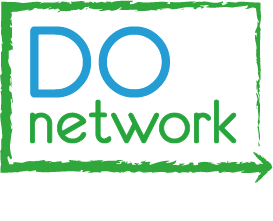Ability Tools, the program that produces this blog, is a program of the California Foundation for Independent Living Centers (CFILC). CFILC has many other programs, including the statewide disability advocacy network, DOnetwork.
Ability Tools and DOnetwork are always looking for ways to collaborate and support one another. This is because we know that if it weren’t for the efforts of those willing to fight for the rights of the disability community, Assistive Technology (AT) would not be as readily available for our community members. Complimenting that, if it weren’t for AT, many members of our community would be less capable of engaging in self-advocacy, and therefore community-advocacy. It is with this happy partnership in mind, that we reached out to our brother down the hall, the Statewide Community Organizer for DOnetwork, Russell Rawlings, to check in and see how AT impacts the work that DOnetwork does.

I don’t know about you, but this is the first time I’ve ever completed the census. I was always aware of the census, kind of the same way that a person who has never had the opportunity for documented employment is aware of taxes, but… I had to admit this publicly when I first started working to help promote disability community engagement in the 2020 Census.
The first thing I learned — when at my previous position of Director of Advocacy at Resources for Independent Living — was that the disability community is part of a “Hard-to-Count” community according to the State of California. (The U.S. Census Bureau has a different approach to defining “Hard-to-Count” communities.) So really, I shouldn’t have been ashamed that I had not responded prior to 2020 because I was:
- Disabled, and my cerebral palsy would make it impossible to respond on my own by paper form
- A renter (yes, this is a challenge for responding, because the U.S. Census Bureau does not track individual apartment units the same way that it does single-family homes!)
- Low income
So many things have changed for me in the past decade. I secured my first full-time job at Resources for Independent Living in 2017, and I became Statewide Community Organizer at California Foundation for Independent Living Centers (CFILC) in April of this year. At the beginning of August, I moved into a house (still a rental, but likely much higher on the U.S. Census Bureau’s address database radar). I am no longer low income.
Although my exposure to the 2020 Census was due to census outreach becoming part of my job, the 2020 Census changed one thing that I believe has led to a major increase in access for our community. The 2020 Census can be completed online. (Right here, in fact!) The website worked well for me, and I was able to use Dragon NaturallySpeaking speech recognition software to complete it.
I’ve reflected back on how I would’ve completed the 2010 Census, had I even received it. I suppose I probably would’ve completed it by phone. Even then, I would’ve been using some assistive technology — I often use a Bluetooth headset with my smartphone, or I’m using the speakerphone. Although I did not receive one, the paper form survey of the 2010 Census would have at least indicated that I needed to do something to be counted.
As we approach the end of the response period for the 2020 Census, I’m wondering — did you use Assistive Technology in completing the 2020 Census? If so, how?
Ability Tools and the DOnetwork have created a survey to find out! Please take a few minutes (it is really short!) to complete our Ability Tools Census 2020 Assistive Technology Survey. The survey is located here: https://www.surveymonkey.com/r/PQMZKSY
Finally, if you haven’t completed the 2020 Census, there is still time! You can complete your Census online, over the phone, or on a paper form. And if you need more resources or assistance, information is available at DisabilityCounts2020.org.
I’m looking forward to future of DOnetwork and Ability Tools collaborations! If you’d like to contact me or find out more about the DOnetwork, you can reach me at: [email protected].






